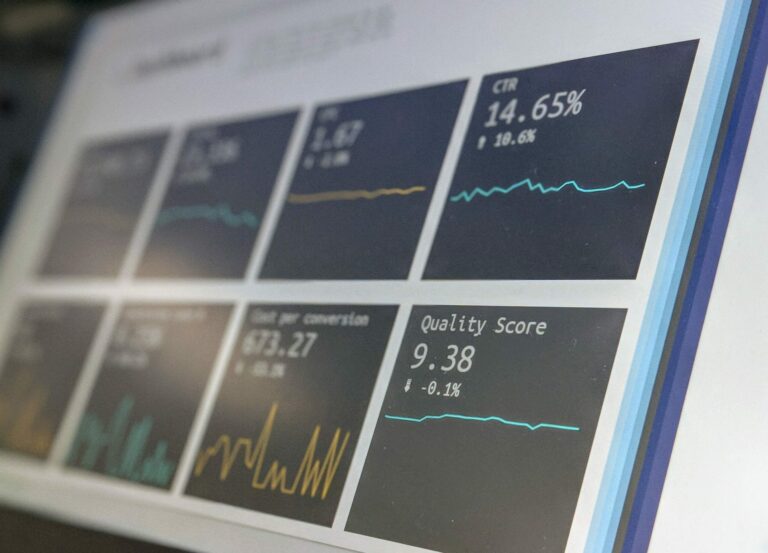Every digital marketer has heard about the benefits and best practices for email marketing, and many businesses have adopted these best practices (and more) to accelerate their digital marketing initiatives.
But, what about email marketing and SEO?

While email marketing and SEO may be seen as working independently from each other — you can use email campaigns to boost your rankings and search visibility. Both are necessary to generate leads, increase engagement, and drive more quality traffic to your website.
Boost SEO with Email Marketing
Every aspect of a robust digital marketing strategy should interconnect in one way or another.
Take social media and driving traffic to your website, for example.
Social media channels can help build your brand’s following, create more opportunities for engagement, and get more people to click through to your website with the goal of turning potential leads into returning customers. This of course wouldn’t be possible without a strong presence on social media or a nice, user-friendly website to send people to, right?
It’s these types of connections that work in tandem so you can reap the results of each one.
The same can be said about email marketing and SEO efforts. Learn a few ways email marketing can help drive SEO results and create better connections for your digital content strategy.
1. Improve bounce rate with quality content and quality visitors
Good content that matches the user’s intent can help combat “bounce rate” (single-page sessions divided by all sessions made of a website visitor). Marketers are always looking for ways to improve bounce rate and improve their rankings on search.
Linking content in email newsletters is a great way to help control the quality of visitors to your website. Those who make the choice to follow a link to read more content on your website means they’re more likely to engage with your content. This not only helps lower your bounce rate, but it also gets the right type of people you want visiting your site. Which is what we’re after.
2. Use existing data for targeted content
Relevancy is a key component of SEO. With segmented email lists and CRM tools, you can narrow down those who are going to find your content most relevant and most valuable. Segmentation (location, gender, job title, buying history, etc.) helps you send emails that subscribers actually want. And all of this starts with data.
If you’re an experienced email marketer, you’ll want to take a look at the data from past email campaigns and newsletters to get insight on your audience’s behavior and learn what type of content they’re responding best to. What sort of CTA’s, subject lines, headers, or design elements (imagery, media, colors) have been most effective for engagement?
The same elements you test for in your email marketing strategies can also be tested on your website. A few ways you can test these elements include:
- A/B testing on CTA buttons with different colors and text
- Changing up your H1s with relevant keywords visitors are likely searching for
- Using some of the same branded imagery to help establish consistency and familiarity
Analyzing how your audience engages with emails can help guide you into making more informed, data-driven decisions that can be used to improve your on-site SEO.
Remember, it’s all about providing content that’s most relevant to your target audience, while staying consistent with your branding and messaging.
3. Work smarter with repurposed content
You’ve heard the expression, “work harder, not smarter.” Depending on who you are and what type of work you do, this may not necessarily be words from the wise. But, something can be said about it in regards to content. Creating fresh, relevant content (for extra SEO points) isn’t always easy to do. It takes time, research, and work to give your audience content they’re excited about.
So, what does it look like to repurpose content? You can do one of two things:
- Repurpose high-performing content on your website that was used in an email newsletter
- Link a blog from your website into your newsletter to help elicit further engagement
This is where things become more seamless in your content strategy. Content derived from emails can give your site more quality content to rank for, and linking to blogs from newsletters can drive more quality traffic to your website.
So, next time you write a stellar newsletter with a high open and click through rate, consider finding a place for that content to live on your website. You could use the content to write a blog post, or list it as “featured content” that all visitors have access to, not just email subscribers.
4. Ramp up social engagement
Your brand’s presence on social media can help boost your SEO efforts by driving more organic traffic to your site, improving your visibility on search, and building better brand awareness.
Again, it all ties into the content you put in front of your target audience.
Sharing is everything. You can make it easy for your subscribers to share your content on social media by providing links in the emails. Social sharing works to your advantage by getting your content in front of more people, and providing more opportunities for people to engage.
When you see a close friend share about a specific brand on their feed or story, you may be more inclined to look at the brand’s social profile, and even click through to their website to learn more.
That’s the power of “word of mouth” and social influence.
Ready to experience real data-driven results through aligned email marketing and SEO efforts? MAKE can craft strategies that grow with your brand, increase traffic to your website, improve your on-site SEO, and ultimately provide you with the results you’re looking for.



